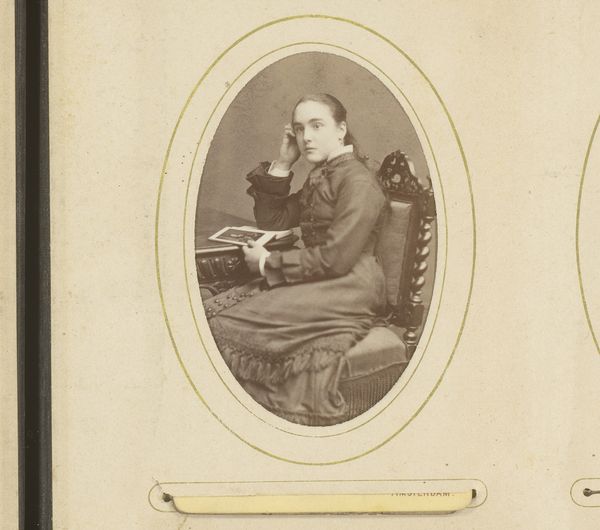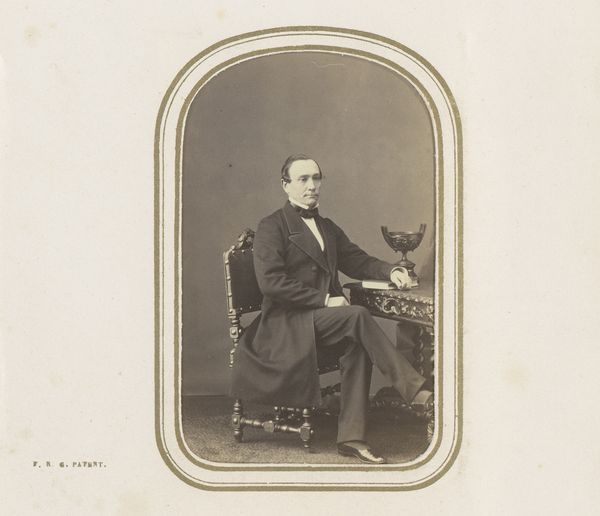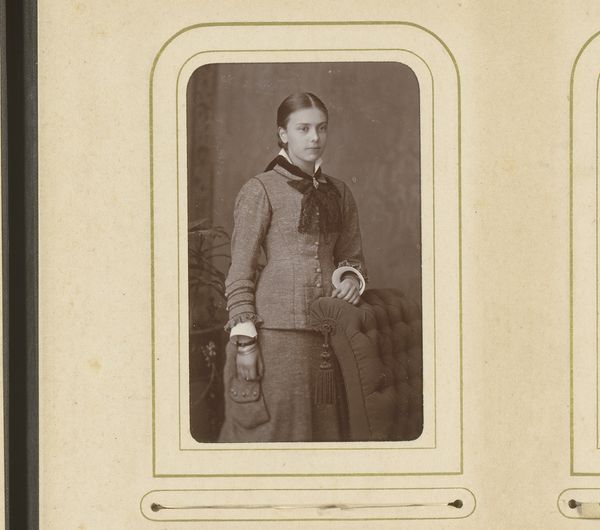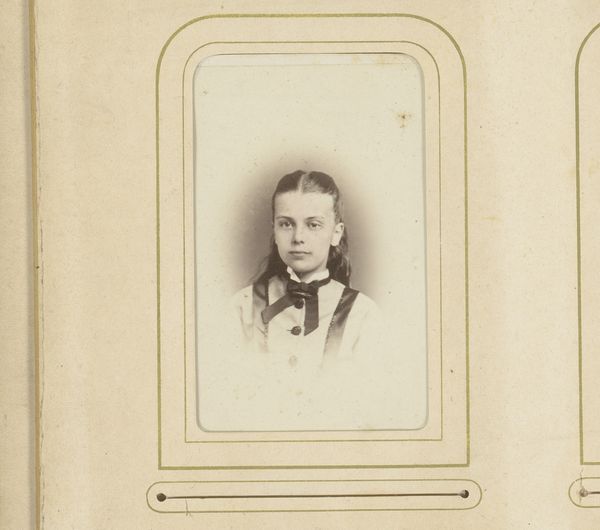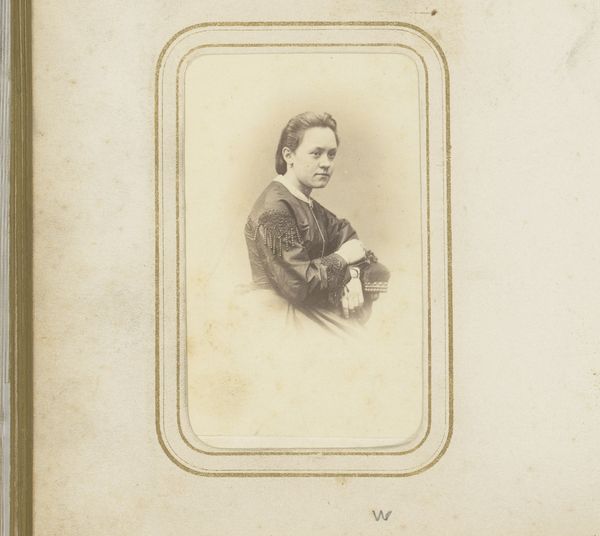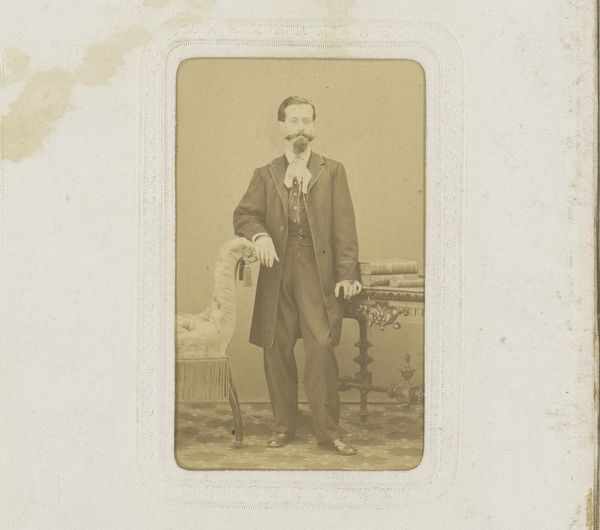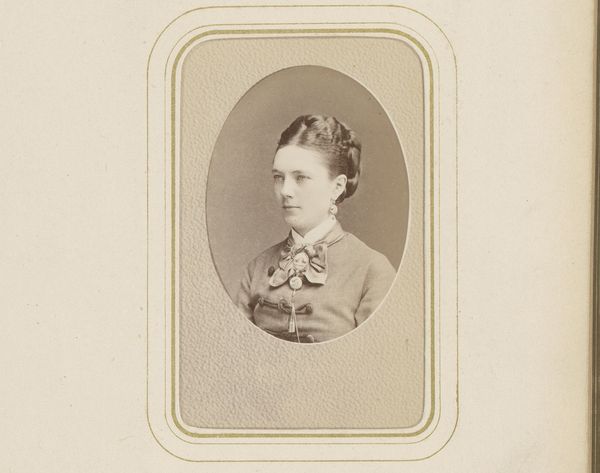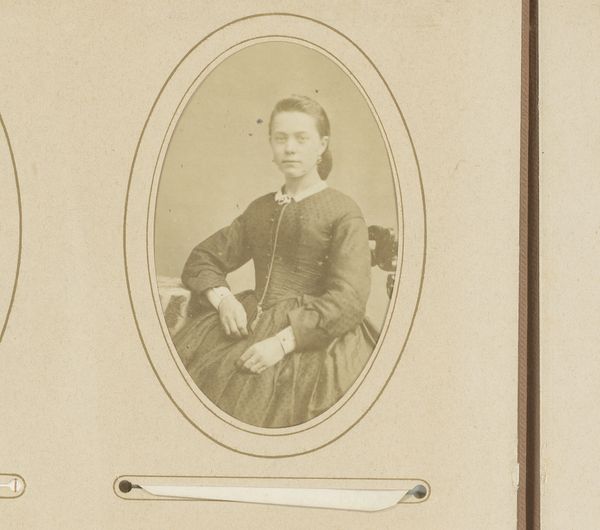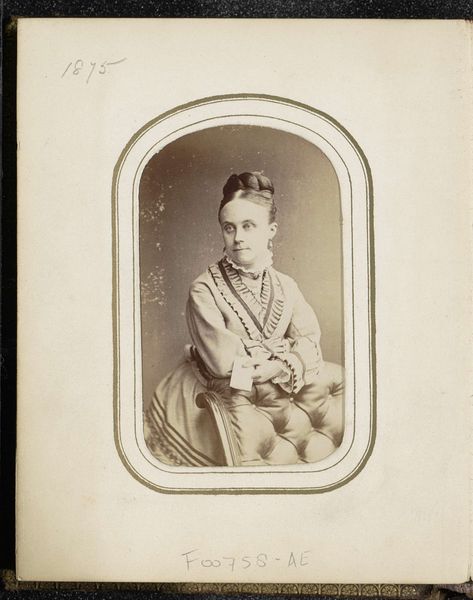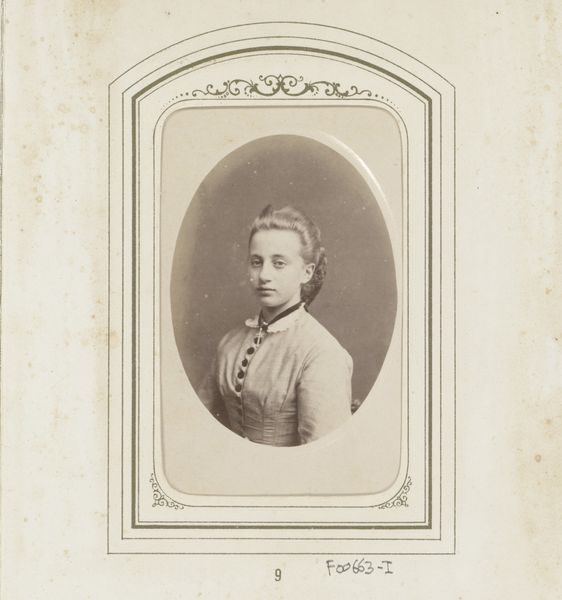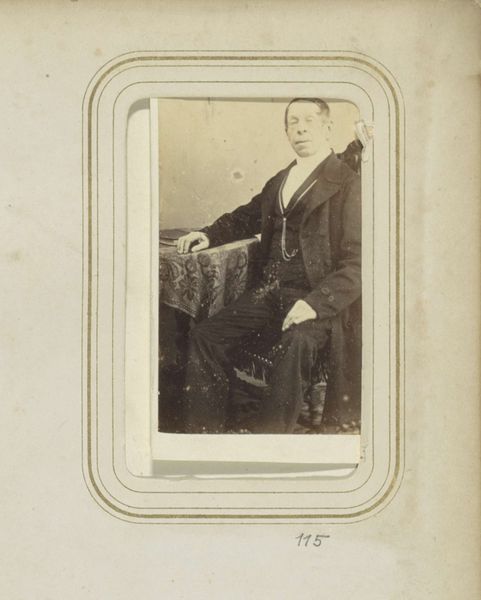
photography, albumen-print
#
portrait
#
pictorialism
#
photography
#
historical photography
#
19th century
#
albumen-print
Dimensions: height 82 mm, width 50 mm
Copyright: Rijks Museum: Open Domain
Curator: This albumen print, titled "Portret van een jonge vrouw, leunend op een balustrade," presents a portrait of a young woman captured sometime between 1874 and 1888 by Arnold Weck. The work aligns with the pictorialist movement. Editor: It’s strikingly somber. The sepia tone and the formal pose evoke a palpable sense of distance, a stillness that is almost unnerving. There’s a calculated austerity to its construction. Curator: Absolutely. The image speaks volumes about the constraints placed upon women during the late 19th century. This wasn’t merely a portrait; it was a declaration of social standing and a visual encoding of Victorian ideals of femininity and propriety. How did these expectations manifest, not just for the sitter, but for women trying to negotiate patriarchal structures during this period? Editor: From a formal point of view, the composition leads the eye directly to the woman’s gaze and hand position; Weck seems to play with the geometric relations within the oval frame—a calculated attempt to highlight the main subject. The sharp lines and textures offset her pose in a very pronounced way, like light versus shadow. Curator: Yes, consider the setting - her reliance upon the architecture as a symbolic gesture, suggesting both confinement and the restricted avenues available for self-expression. It reveals both an artistic statement and the sociopolitical climate of the day, raising profound questions about power, representation, and agency. Who gets to pose, who gets to be framed in certain way, and who dictates the rules of representation? Editor: Thinking about the photographer's engagement with shadow and tonality is revealing too, as is the contrast between the ruffles on her collar and the very plain balustrade she leans upon. Perhaps we can see Weck exploring light as a mechanism to create not just form but narrative. It makes this portrait especially evocative. Curator: Indeed, it prompts a deeper examination of how visual cues were manipulated to construct identity during a transformative epoch. This extends the discussion on agency, pushing us to question who has power in shaping representations of gender, class, and the prevailing narratives about women in this pivotal time. Editor: On the one hand we can assess the visual structure to uncover details in the form and how they contribute to its narrative qualities. Curator: And on the other hand we consider how photographs such as this engaged in larger narratives around women's lives at a historical moment that saw emerging and persistent patriarchal power structures at work.
Comments
No comments
Be the first to comment and join the conversation on the ultimate creative platform.
